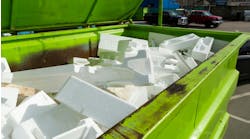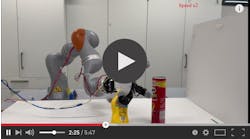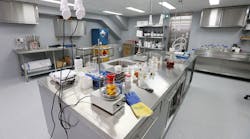On Mars and in Your Car, Flexible Shafts Play an Important Role
With automation and actuation becoming more prevalent, flexible shafts from Suhner Manufacturing Inc. are in demand—here on earth and beyond.
Suhner Manufacturing's flexible shafts are used in a variety of applications, from power windows and seats in cars to the rover Curiosity on Mars, explains Michael Boehm, director of marketing and sales for the company.
"As our world is getting lazier and more things in our everyday life are getting automated and actuated, there is a big demand for a simple device to transmit rotary motion silently from a power source to the part that needs to be actuated," Boehm tells New Equipment Digest. "That's where the flexible shaft comes in."
NED: Why did Suhner decide to market flexible shafts?
MB: As our world is getting lazier and more things in our everyday life are getting automated and actuated, there is a big demand for a simple device to transmit rotary motion silently from a power source (motor, hand actuation) to the part that needs to be actuated. That's where the flexible shaft comes in.
Need an example? Just think of your car: power seats, power sunroof, power windows, power adjustable pedals and steering column, power sliding door and power rear hatch. These are all applications where Suhner flexible shafts are being used.
NED: How are flexible shafts different from similar products?
MB: Compared with other means to transmit rotary motion-rigid drives with U-joints, angle drives, gear boxes and micro motors to name a few-flexible shafts have a good number of advantages. They can overcome misalignments, compensate relative movement from one part to the other, and drive or synchronize the movement from two or more items driven off one motor.
They also are lightweight, extremely rugged, virtually maintenance-free and very attractive in regard to cost.
I think a pledge to their quality and reliability is that they are being used in probably the harshest environment any machine has to work: Mars. Rover "Curiosity" as well as its predecessor are using several Suhner flexible shafts with great success. Failure is really not an option in these kinds of applications.
NED: What problems did you encounter during the development process?
MB: When designing a tiny shaft for an instrument used in laparoscopic surgery, challenges obviously are radically different than when trying to accommodate the higher power output in your new string trimmer. The main task among all types of projects is to capture all requirements to be able to offer the best solution, not just the solution that works.
NED: How long did it take from conception to final production?
MB: Development time again depends greatly on the specific application and the market segment it goes into. A couple hours for shafts in an industrial application to years and years for shafts used in aerospace or medical where there is a lot of testing involved from the customer side.
NED: Did cost factors play a role in changing the final design of the product?
MB: Cost is always a factor. Cost is actually often one of the reasons why customers come to us-to take costs out of their products. Flexible shafts allow for very cost-effective solutions to transmit rotary motion.
As for the design of the flexible shaft itself, the target price range the customer specified is one of the specifications we try to fulfill when engineering the flexible shaft-as good as necessary and as cost efficient as possible.
NED: Who do you consider your target audience to be and what benefits will they realize from using this product?
MB: One of the facts that makes our job here at Suhner so interesting is that basically any engineer in any market segment looking for a mechanical transition element is our potential target and can use our flexible shafts, which lets us get involved in a lot of different applications.
NED: Any other interesting highlights that you think our readers would enjoy knowing?
MB: Flexible shafts are not a commodity but an engineered component. Even though two shafts might look alike, they could have completely different specifications and capabilities.
Approximately 95 percent of our flexible shafts are therefore custom-made solutions. We will be turning 100 years old next year, which means we have lots of experience.










